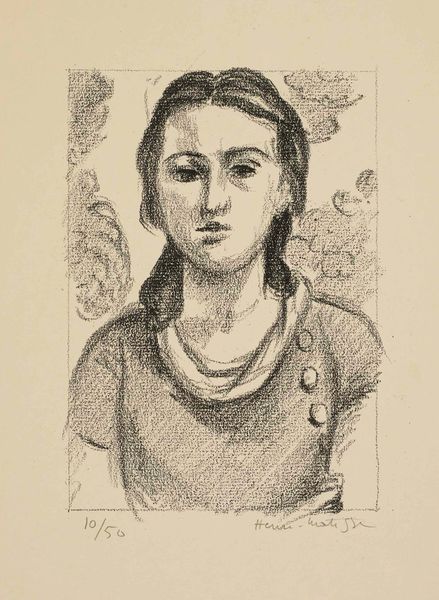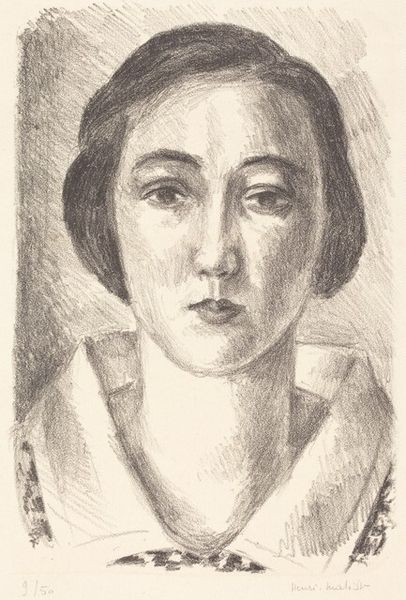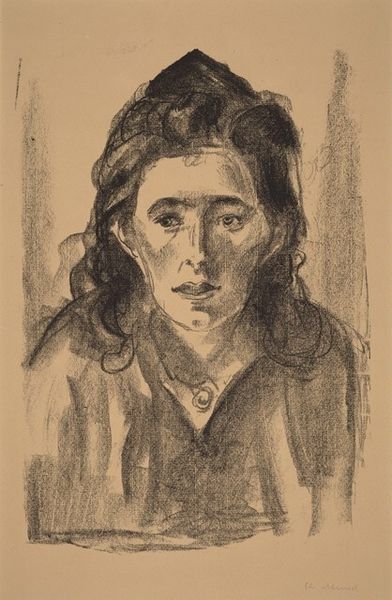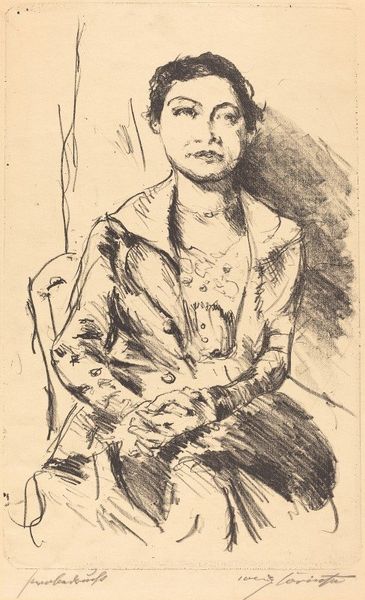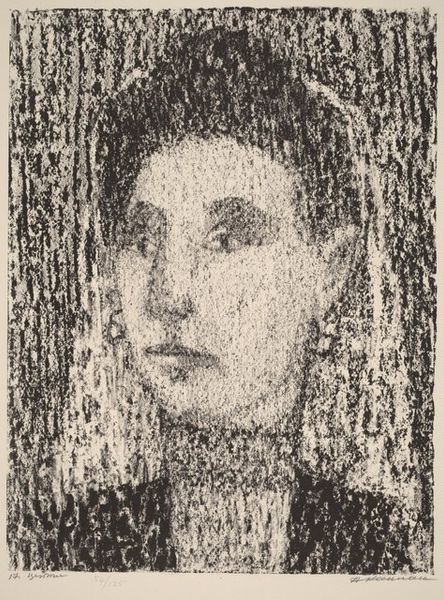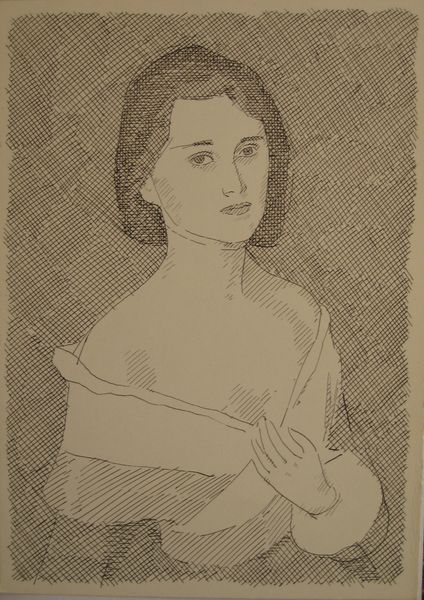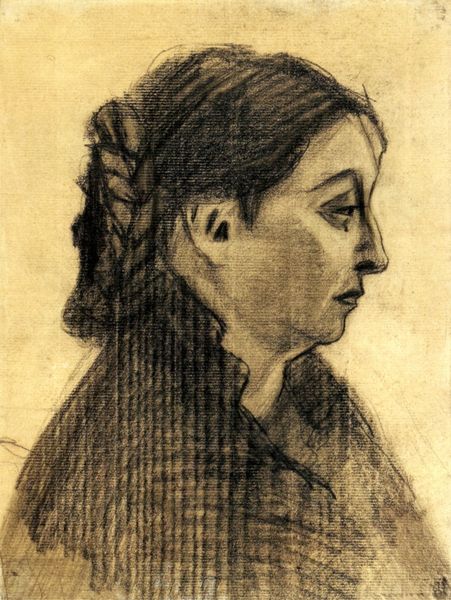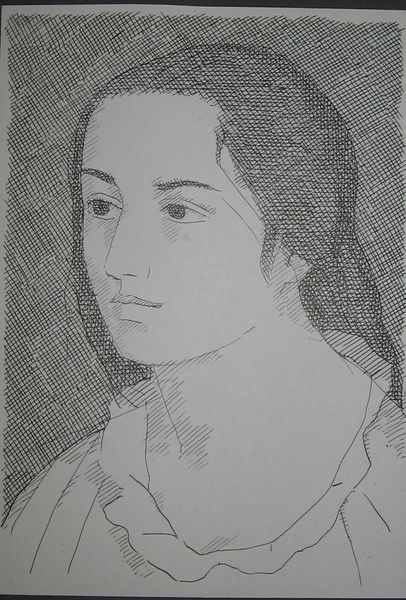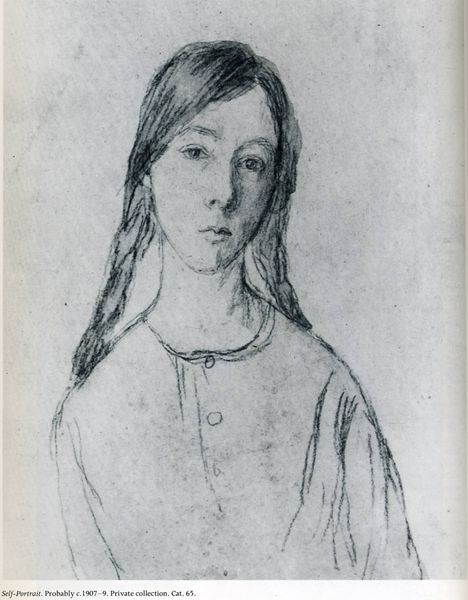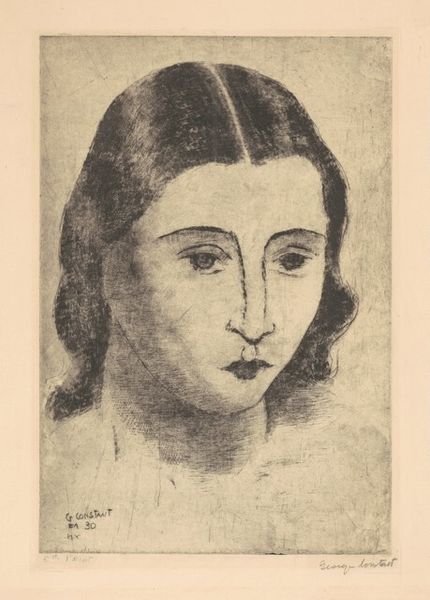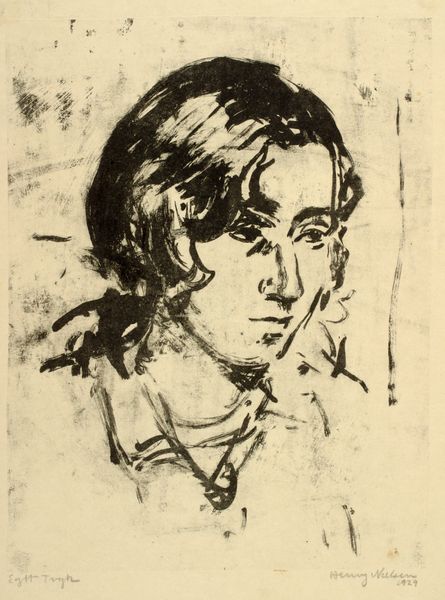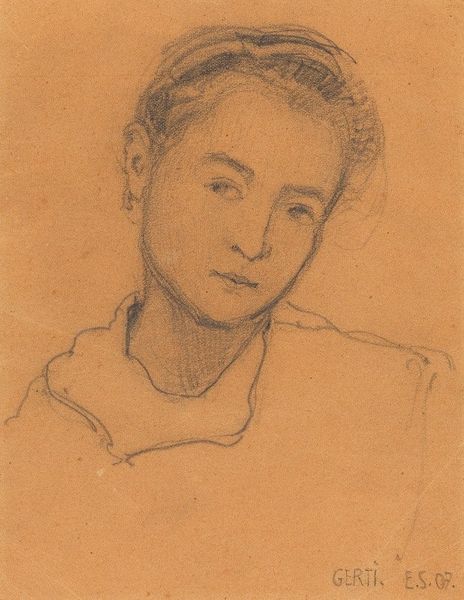
Bust of a Young Girl, Arms Crossed (Buste de jeune fille, les bras croisés) 1925
0:00
0:00
Copyright: National Gallery of Art: CC0 1.0
Curator: Here we have Henri Matisse's "Bust of a Young Girl, Arms Crossed," a print dating to 1925. Editor: It’s remarkably understated, isn’t it? The young woman's posture suggests a certain pensiveness. You immediately notice the artist’s economical use of line. Curator: Absolutely. While known for his vibrant color, here Matisse explores the power of simplicity. Pencil, as a medium, enjoyed rising popularity with the rise of print media. We are seeing its democratizing effects, enabling broad, and cost effective, reproductions of drawings such as this one. Editor: Indeed, it's a study in reduction. It makes me think about the physical process. He’s almost sculpting the figure with the graphite, layering the strokes to build depth and shadow. Look at the rendering of her dress; it's a dense weave of lines. I wonder how many impressions were produced from this. Curator: As the inscription at the bottom indicates, this is the 31st from a limited run of fifty prints. These small runs kept the prices reasonably high for a pencil and paper reproduction, while also conveying some level of scarcity and therefore perceived value. Editor: You can almost feel the texture of the paper through the lines. And those crossed arms—it's a gesture that simultaneously feels vulnerable and defiant. Were many other copies reproduced and disseminated? Were they hand-distributed, for example, between students? The artist must have considered his audience to be a group keen to collect an intimate and domestic depiction like this one. Curator: Well, that’s the intriguing question, isn’t it? While Matisse was gaining international recognition, prints like these also served to connect him with a broader audience through print markets and, most certainly, private collecting circles. Editor: This brings a fresh intimacy to an artist typically associated with bold colors and luxurious interiors. I appreciate how much it reveals about process and his mastery of humble materials. Curator: A testament to the versatility of a master, and the surprising depth that can be achieved through minimal means. Editor: A truly telling example about the ways in which material and access impact not only creation but the way in which we can experience a work like this today.
Comments
No comments
Be the first to comment and join the conversation on the ultimate creative platform.
